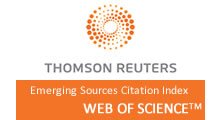Increasing Students’ Gymnastic and Rhythmic Activities through Locomotor, Non-locomotor, and Manipulative Movement Patterns
1396
882
Abstract
This research aims to develop a model of floor gymnastics learning and rhythmic activities with the TPSR approach. The subjects of this study were students of grades 1, 2, 3 of State Elementary School 01 Sampangan Gajah Mungkur District of Semarang City and SDN Srondol Kulon 02, with a total of 76 students. The development research design has used the procedure of investigating the needs followed by developing the information, developing the product design, validation tests, and trials to the product. The results show that the traditional game "Ride the Train" is considered appropriate and effective as a learning model which consists of the objectives, the roles, the characters, the provisions, and the regulations following school conditions and situations. The results of the skill the assessment showed that all students were able to get grades with increased distribution, according to statistical tests, showing a count of -22,477, and p-value of 0.000 or less than 0.05. The conclusion is a significant difference in learning outcomes after being given this game model. The game using the TPSR method approach can explore the ability of gymnastic and rhythmic activities through locomotor, non-locomotor and manipulate the student's movements.
Keywords
Learning models, Gymnastics learning, Locomotor, Movement patterns,
Full Text:
PDFReferences
Yuwono, C., Rahayu, T., Sulaiman, & Rustiadi, T. (2022). Increasing students’ gymnastic and rhythmic activities through locomotor, non-locomotor, and manipulative movement patterns. International Journal of Education in Mathematics, Science, and Technology (IJEMST), 10(1), 57-73. https://doi.org/10.46328/ijemst.2164
DOI: https://doi.org/10.46328/ijemst.2164
Refbacks
- There are currently no refbacks.
Copyright (c) 2022 International Journal of Education in Mathematics, Science and Technology







International Journal of Education in Mathematics, Science and Technology (IJEMST)

This work is licensed under a Creative Commons Attribution-NonCommercial-ShareAlike 4.0 International License.
ISSN: 2147-611X (Online)
